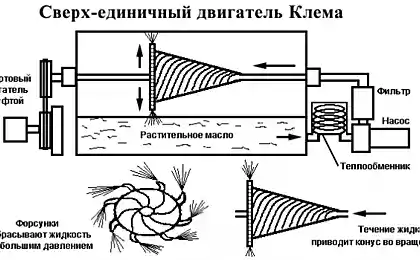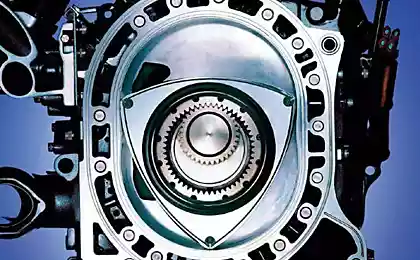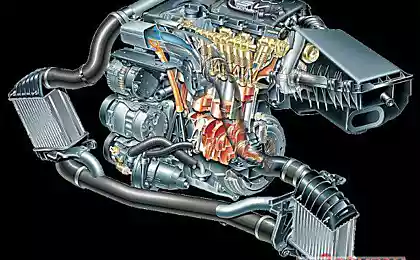892
The story of billionaire
16 photos + text about a man who became a billionaire
Certainly, many believe that the ketchup from the beginning made from tomatoes. In fact, it is a collective word for salty, spicy liquid sauces. If you look back to the eighteenth century, it appears that the first ketchup was prepared from anchovies, walnuts, mushrooms and beans mixed with spices, garlic or onions, wine and alcoholic beverages. One of the well-known theory is that the word "ketchup" came from the Chinese koechiap or ke-tsiap, which means a brine or sauce with canned fish. Somewhere in the late seventeenth century, samplers, and the name of ketchup moved to England. And later the name stuck for the ketchup all over the world. The British took the idea into service and used ketchup for pickling anchovies and oysters.
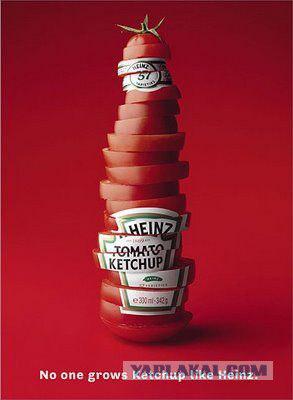
Recent studies have shown that since the pureed tomatoes greater antioxidant lycopene, high-quality ketchup can benefit the body. However, other studies have found that in order to really feel the benefit of some, the day will need to eat ketchup bottle 200 ml.
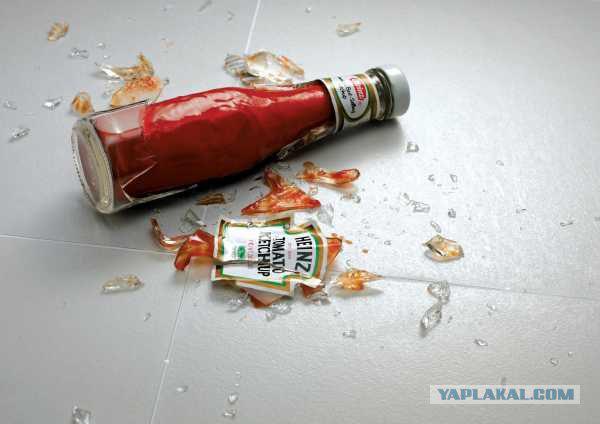
In 1876 Henry J.. Heinz began manufacturing tomato ketchup, which became the most popular ketchup in the world. Ketchup recipe that has not changed to this day. Although another version of tomato ketchup originated from Asian cuisine, where it is known as a simple sweet tomato sauce.

Bookable find recipes tomato ketchup with plums, blueberries, peppers, mangoes and other fruits, berries and vegetables. The sale is also available to many varieties of ketchup, tomato ketchup including different colors.
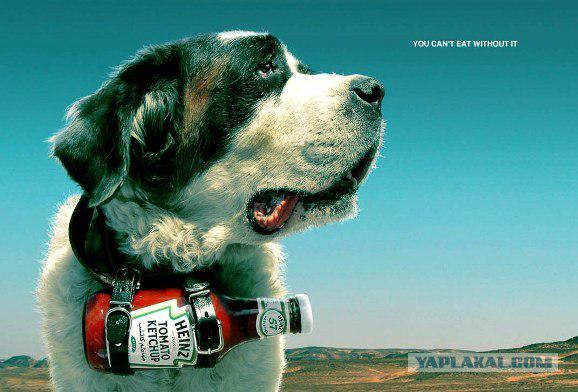
Most successful business begins with the introduction of a useful invention. But Henry Heinz lucky more than others - not invented by him at the end of the XIX century ketchup is difficult to imagine modern life. Henry John Heinz founded the company is still owned by his descendants. Incidentally, the US presidential candidate Democrat John Kerry is married to Teresa Heinz, widow of Sen. John Heinz III, great-grandson of the famous founder. From her husband Teresa inherited quite decent condition - $ 500 million. Every 6 out of 10 consumed bottles of ketchup in the United States - "Heinz" ketchup and the share in the total sale of the company is 30%. However, the company produces a lot of things, such as canned cat.
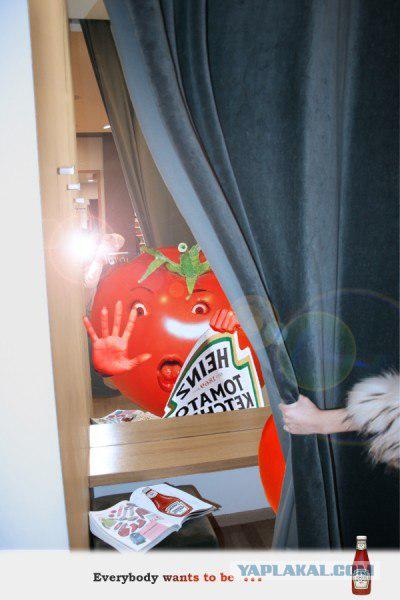
As the summer of 1896 51-year-old owner of several factories for the production of spices and ketchup Heinz, Henry was in New York. Successful millionaire pulled to unwind, and he decided to walk through this great town. After strolling through the streets, Heinz sat in the Skytrain, where his eyes fell on the advertising of a shoe store, offers clients "21 style shoes." And then it dawned on Henry. By analogy with just the seen advertising, he began to count the number of products that his company produced HJ Heinz. "I counted well over 57, but the number" 57 "continues to swirl in my mind - he later recalled Heinz. - Seven had such a psychological fascination that the numbers "58" or "59" is a completely do not attract me. " This finding is so excited Henry, that he immediately got off the train and ran to the office.
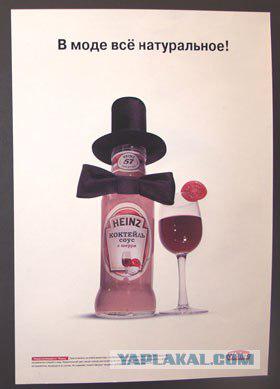
So there was the famous slogan of the company Heinz «57 Varieties» (57 species), which is still present on the label of the classic ketchup "Heinz". A few weeks after that memorable trip to New York subway number "57" was adorned with advertising companies from newspaper ads to giant billboards in the cities. The success of the Heinz & Noble shirilsya. The product range was gradually expanded. Now, the company began to produce more packaged sauerkraut and pickles. In 1874 the company moved to larger premises, purchased hundreds of acres of garden land and 24 horses, 12 wagons and a factory for the production of vinegar in the St-Louis. Also representative Heinz & Noble to open in Chicago.
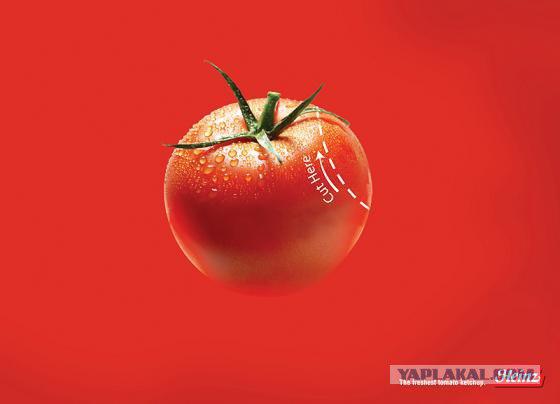
But after a year of the Heinz & Noble suddenly snapped. Back in 1873 in the United States began an economic depression. However, in the firm Heinz & Noble, these macroeconomic disturbances hardly affected. They knocked down the unusually bountiful crop of cucumbers in 1875. Heinz & Noble carried to farmers obligation to redeem their entire crop at a fixed price. But this time cucumbers were so many that they reserved for the purchase of tools is not enough, and the company was unable to fulfill the requirements of farmers. And because of the continuing depression to get credit it was practically impossible. Heinz & Noble was declared bankrupt.
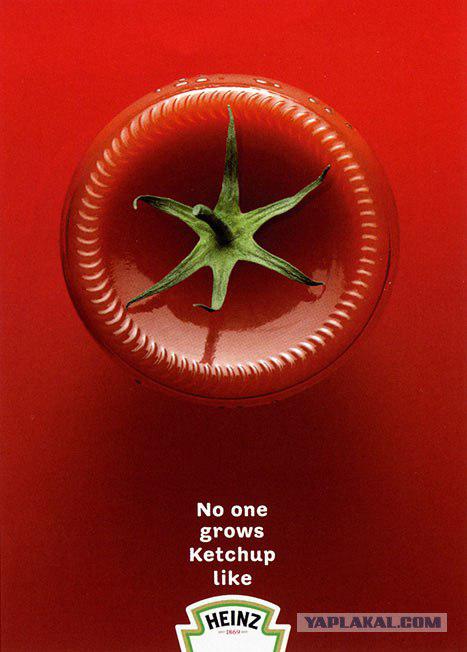
Ketchup Heinz was a happy invention. Consumers have from him just thrilled. Now you can dramatically improve the taste of a variety of products - from hot dogs to pasta. During 1876 the company's turnover amounted to $ 44,474 Heinz (about $ 665 thousand. Now). Five years later, in 1881, sales increased for the sixth time and amounted to $ 284 thousand. (About $ 4, 7 million now). Such rapid growth of income has enabled him in 1879 to pay off all the debts related to "cucumber" bankruptcy.
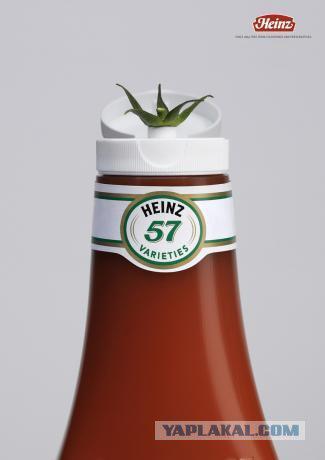
Henry continued to expand the name of the canned food, sauces and marinades. For ketchup followed by products such as sauces of red and green peppers, sauce "Chile", apple cider vinegar, apple gravy, mustard, olives, pickled onions, pickled cauliflower, baked beans and pickles. Soon the company Heinz present and in the production of canned tuna. And in all cases, one scheme worked: Product selection from several options, bringing the taste and the production technology perfected, original packaging, active advertising and mass production. Overtake rivals helped and active use of the most advanced technology at the time: steaming and vacuum canning.
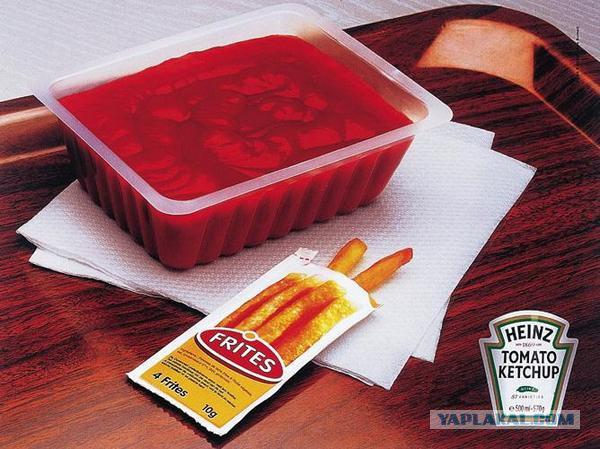
In 1888, Henry completed the redemption of his relatives, and renamed it the HJ Heinz. The newspapers are now Henry was referred to as the "pickle king".
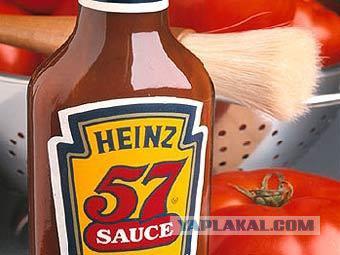
Know-how Henry Heinz
1. Consumers prefer transparent packaging in which the product quality can be seen. As Henry said: "Seeing is believing."
2. Buyers will appreciate, even if the simple things to do accurately.
3. Proprietary bottle, branded label branding - "57 species" - saved the company up to now.
4. Free distribution of probes with the finished product.

Four steps to a million
1. With seven years of Henry John Heinz cultivated garden and sold vegetables.
2. With 12 years began to sell in the local grocery store grated horseradish, to make it a prescription mother. The proceeds from the sale are more than enough money to pay for college.
3. In the 25 years the firm has organized the production of grated horseradish on a commercial scale.
4. At age 32, came up with a completely new product - ketchup.
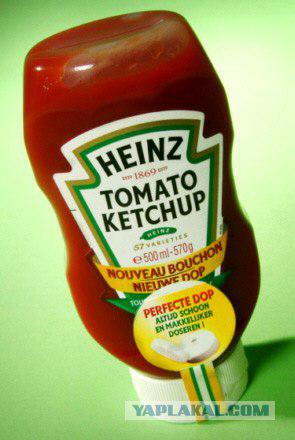
Source:
Certainly, many believe that the ketchup from the beginning made from tomatoes. In fact, it is a collective word for salty, spicy liquid sauces. If you look back to the eighteenth century, it appears that the first ketchup was prepared from anchovies, walnuts, mushrooms and beans mixed with spices, garlic or onions, wine and alcoholic beverages. One of the well-known theory is that the word "ketchup" came from the Chinese koechiap or ke-tsiap, which means a brine or sauce with canned fish. Somewhere in the late seventeenth century, samplers, and the name of ketchup moved to England. And later the name stuck for the ketchup all over the world. The British took the idea into service and used ketchup for pickling anchovies and oysters.

Recent studies have shown that since the pureed tomatoes greater antioxidant lycopene, high-quality ketchup can benefit the body. However, other studies have found that in order to really feel the benefit of some, the day will need to eat ketchup bottle 200 ml.

In 1876 Henry J.. Heinz began manufacturing tomato ketchup, which became the most popular ketchup in the world. Ketchup recipe that has not changed to this day. Although another version of tomato ketchup originated from Asian cuisine, where it is known as a simple sweet tomato sauce.

Bookable find recipes tomato ketchup with plums, blueberries, peppers, mangoes and other fruits, berries and vegetables. The sale is also available to many varieties of ketchup, tomato ketchup including different colors.

Most successful business begins with the introduction of a useful invention. But Henry Heinz lucky more than others - not invented by him at the end of the XIX century ketchup is difficult to imagine modern life. Henry John Heinz founded the company is still owned by his descendants. Incidentally, the US presidential candidate Democrat John Kerry is married to Teresa Heinz, widow of Sen. John Heinz III, great-grandson of the famous founder. From her husband Teresa inherited quite decent condition - $ 500 million. Every 6 out of 10 consumed bottles of ketchup in the United States - "Heinz" ketchup and the share in the total sale of the company is 30%. However, the company produces a lot of things, such as canned cat.

As the summer of 1896 51-year-old owner of several factories for the production of spices and ketchup Heinz, Henry was in New York. Successful millionaire pulled to unwind, and he decided to walk through this great town. After strolling through the streets, Heinz sat in the Skytrain, where his eyes fell on the advertising of a shoe store, offers clients "21 style shoes." And then it dawned on Henry. By analogy with just the seen advertising, he began to count the number of products that his company produced HJ Heinz. "I counted well over 57, but the number" 57 "continues to swirl in my mind - he later recalled Heinz. - Seven had such a psychological fascination that the numbers "58" or "59" is a completely do not attract me. " This finding is so excited Henry, that he immediately got off the train and ran to the office.

So there was the famous slogan of the company Heinz «57 Varieties» (57 species), which is still present on the label of the classic ketchup "Heinz". A few weeks after that memorable trip to New York subway number "57" was adorned with advertising companies from newspaper ads to giant billboards in the cities. The success of the Heinz & Noble shirilsya. The product range was gradually expanded. Now, the company began to produce more packaged sauerkraut and pickles. In 1874 the company moved to larger premises, purchased hundreds of acres of garden land and 24 horses, 12 wagons and a factory for the production of vinegar in the St-Louis. Also representative Heinz & Noble to open in Chicago.

But after a year of the Heinz & Noble suddenly snapped. Back in 1873 in the United States began an economic depression. However, in the firm Heinz & Noble, these macroeconomic disturbances hardly affected. They knocked down the unusually bountiful crop of cucumbers in 1875. Heinz & Noble carried to farmers obligation to redeem their entire crop at a fixed price. But this time cucumbers were so many that they reserved for the purchase of tools is not enough, and the company was unable to fulfill the requirements of farmers. And because of the continuing depression to get credit it was practically impossible. Heinz & Noble was declared bankrupt.

Ketchup Heinz was a happy invention. Consumers have from him just thrilled. Now you can dramatically improve the taste of a variety of products - from hot dogs to pasta. During 1876 the company's turnover amounted to $ 44,474 Heinz (about $ 665 thousand. Now). Five years later, in 1881, sales increased for the sixth time and amounted to $ 284 thousand. (About $ 4, 7 million now). Such rapid growth of income has enabled him in 1879 to pay off all the debts related to "cucumber" bankruptcy.

Henry continued to expand the name of the canned food, sauces and marinades. For ketchup followed by products such as sauces of red and green peppers, sauce "Chile", apple cider vinegar, apple gravy, mustard, olives, pickled onions, pickled cauliflower, baked beans and pickles. Soon the company Heinz present and in the production of canned tuna. And in all cases, one scheme worked: Product selection from several options, bringing the taste and the production technology perfected, original packaging, active advertising and mass production. Overtake rivals helped and active use of the most advanced technology at the time: steaming and vacuum canning.

In 1888, Henry completed the redemption of his relatives, and renamed it the HJ Heinz. The newspapers are now Henry was referred to as the "pickle king".

Know-how Henry Heinz
1. Consumers prefer transparent packaging in which the product quality can be seen. As Henry said: "Seeing is believing."
2. Buyers will appreciate, even if the simple things to do accurately.
3. Proprietary bottle, branded label branding - "57 species" - saved the company up to now.
4. Free distribution of probes with the finished product.

Four steps to a million
1. With seven years of Henry John Heinz cultivated garden and sold vegetables.
2. With 12 years began to sell in the local grocery store grated horseradish, to make it a prescription mother. The proceeds from the sale are more than enough money to pay for college.
3. In the 25 years the firm has organized the production of grated horseradish on a commercial scale.
4. At age 32, came up with a completely new product - ketchup.

Source:













